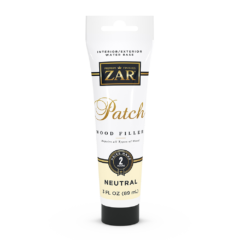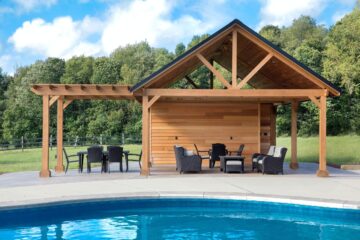
Oil and water-based stains each possess unique qualities, benefits and potential setbacks that make them applicable to a range of surfaces. However, knowing which stain to use for your project can be difficult, especially if you don’t have prior experience with or knowledge of the two choices.
In this article, we will investigate the crucial differences between these two stain types — including their makeup, performance levels, ease of application, and compatibility with various types of wood to help you make the best decision for your upcoming project.
What is the Purpose of Stains?

Stains are used in painting for a variety of purposes, including:
Protection: Staining your wood helps to protect it from external elements, such as water and sunlight.
Enhance the color of the wood: Wood stain can be used to completely alter the hue of wood products or to bring out natural colors.
To create a specific look or feel: Whether your desired style is classic, modern or rustic, you can achieve it with the help of wood stain.
Understanding Oil-Based Stains
Pros
Penetrate Deeply
Compared to water molecules, oil molecules are much smaller in size, enabling them to penetrate the board more deeply with an added layer of moisture beneath its surface. As a result, wood stains that contain oil have been proven to be longer-lasting and possess higher durability than those consisting of only water.
Rich Color
Oil-based stains provide a darker, richer color as they bind with the wood to create a film that reflects light and adds dimension.
Long-Lasting — Excellent for Exterior Use
Oil-based stains provide a more lasting finish on wood than water-based alternatives due to their ability to deeply penetrate the surface.
Cons
Longer Dry Times
The oil evaporates more slowly from wood surfaces, which causes an extended drying process compared to water.
May Require Multiple Coats
Oil-based stains may require multiple coats because they are not as opaque as water-based stains. This means that the wood grain will show through the first coat of stain, and multiple coats are required to achieve a uniform color.
The number of coats of stain required will depend on:
Type of wood being stained
Desired color
Desired finish
Applying multiple coats of stain will also help to protect the wood from wear and tear.
Fumes
Some people with sinus sensitivities may be affected by the odors of oil-based stains.
Understanding Water-Based Stains
Pros
Quick Drying Times
Water evaporates quickly, which helps to speed up the drying process. Additionally, water-based stains are typically made with pigments that are soluble in water, which also helps to speed up the drying process.
Emit Fewer Fumes
Choosing water-based stains is more eco-friendly and less hazardous to your health than oil-based options, as they contain fewer volatile organic compounds (VOCs).
Easy Clean-up
Water is the main solvent in water-based stains which allows for easy cleanup. The stain components dissolve in water and can be successfully removed with a simple rinse of soap and water.
Less Expensive
Water is a cheap and abundant material, while oil is more expensive. Water-based stains are typically made with pigments that are soluble in water, which also helps to reduce the cost of the stain.
Cons
May Not Penetrate as Deeply
Water-based stains are made up of water, which is a polar molecule. This means that it is attracted to water, which makes it difficult for the water in the stain to penetrate the wood’s pores.
Not as Durable in Exterior Applications
Water-based stains may be damaged by sunlight, rain and wind, if not properly formulated with UV absorbers and other protective ingredients.
Could Raise Grain of Wood
Water will cause the grain of the wood to raise because the wood fibers will swell. When the wood fibers swell, they become more visible and the surface of the wood becomes rough. Grain raising is a common problem with water-based stains, and it can be difficult to avoid.
How to Choose Between Water and Oil-Based Stains?
Consider the Type of Wood
The porosity of wood affects the finished look of a stain in the following ways:
Porous woods will absorb more stain than non-porous woods.
Porous woods will also tend to show the grain more than non-porous woods.
Non-porous woods will not absorb as much stain, so you can use a heavier coat of stain without worrying about it soaking through.
For example, oak, maple and walnut are not very porous while pine and fir are porous.
Usage — Exterior or Interior
The following factors help determine whether to use an oil-based or water-based stain on an exterior project:
Weather conditions: Water-based stains are more susceptible to damage from sunlight, rain and wind than oil-based stains. If you live in an area with extreme weather conditions, you should use an oil-based stain.
Type of wood: Some woods, such as pine and fir are more prone to rot and mildew than others. These wood products are better protected with an oil-based finish.
Desired finish. Oil-based stains will give you a darker, more opaque finish than water-based stains. If you want your wood to have a natural look, you should use a water-based stain.
Color Desires
The color of the stain you choose can affect the choice between an oil-based stain and a water-based stain. Oil-based stains can be mixed to create a wide range of custom colors.
Level of Protection
When selecting between an oil-based stain or a water-based stain, the level of protection required plays a crucial role. Oil-based stains offer superior coverage against aspects like sunlight and moisture compared to their water-based equivalents. However, they also take longer to dry — up to 24 hours as opposed to 4 hours with water-based products.
The Best Oil-Based Stains for Interiors and Exteriors

ZAR® stains truly stand out as the best choice for wood finishing, due to their controlled penetration that ensures uniform color without streaks or lap marks. Their rich color palette, including designer color names, allows for creative customization, and the fact that they’re tintable adds even more versatility. Plus, ZAR stains provide better coverage compared to competitors, so you get more value for your investment.
The Best Interior Oil-Based Stains

ZAR Interior Oil Base Stain is a high-end product formulated for easy application and an exceptional finish on a wide array of wood surfaces. Its “controlled penetration” technology assures even color without streaks or lap marks, allowing you to apply the stain over previously painted or varnished surfaces with no need for stripping. It’s perfect for interior projects like furniture, cabinets and woodwork that demand superior results.
The Best Exterior Oil-Based Stains

ZAR Deck & Siding Semi-Transparent Stain is a premium exterior wood stain designed to enhance the beauty and durability of your deck, siding and other outdoor wood surfaces. This semi-transparent stain provides rich color while allowing the wood’s natural grain to show through, ensuring an appealing finish. It is formulated for protection against the elements and is an ideal choice for maintaining the appearance and longevity of your exterior wood projects.
Applying this product is easy and it offers excellent adhesion, abrasion resistance and outstanding durability. It rejuvenates new wood surfaces and refreshes old pressure-treated unpainted wood as well. It’s suitable for a variety of applications including decks, siding, docks, shakes and shingles and more.
Choose the Best Oil-Based Stains with ZAR

Enhance your indoor and outdoor living spaces by choosing the best oil-based stains from ZAR. Experience the unparalleled beauty and durability provided by our premium stains for your wood surfaces.
Don’t compromise on quality — protect your investment against the elements while showcasing the wood’s natural grain and rich color. Make the smart choice and choose from ZAR’s comprehensive range of stain products.
Contact us today to find a supplier near you!



